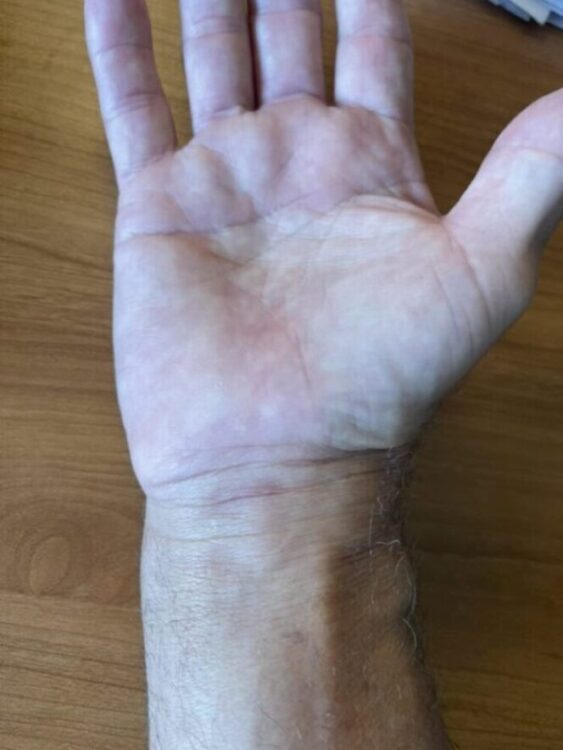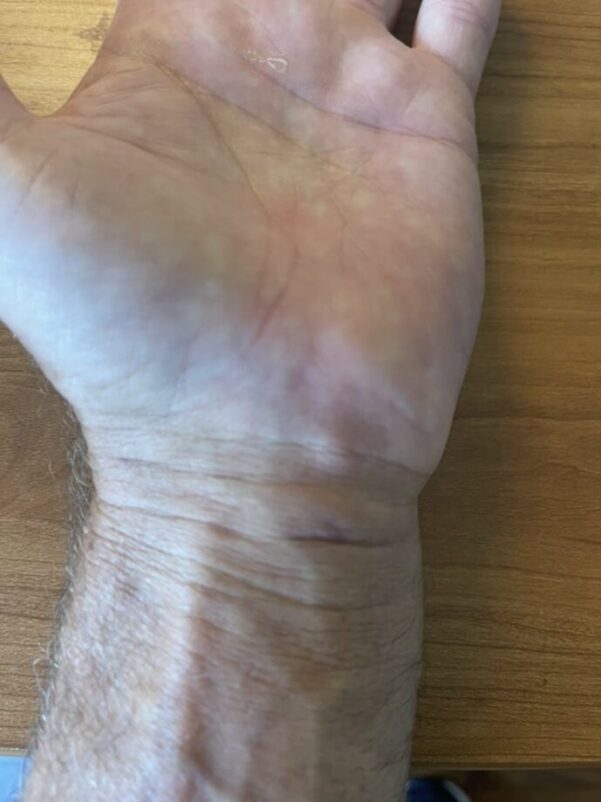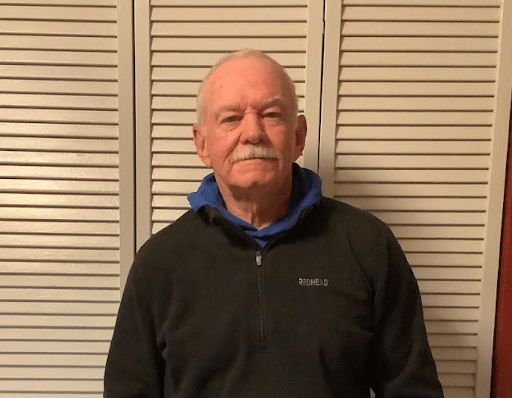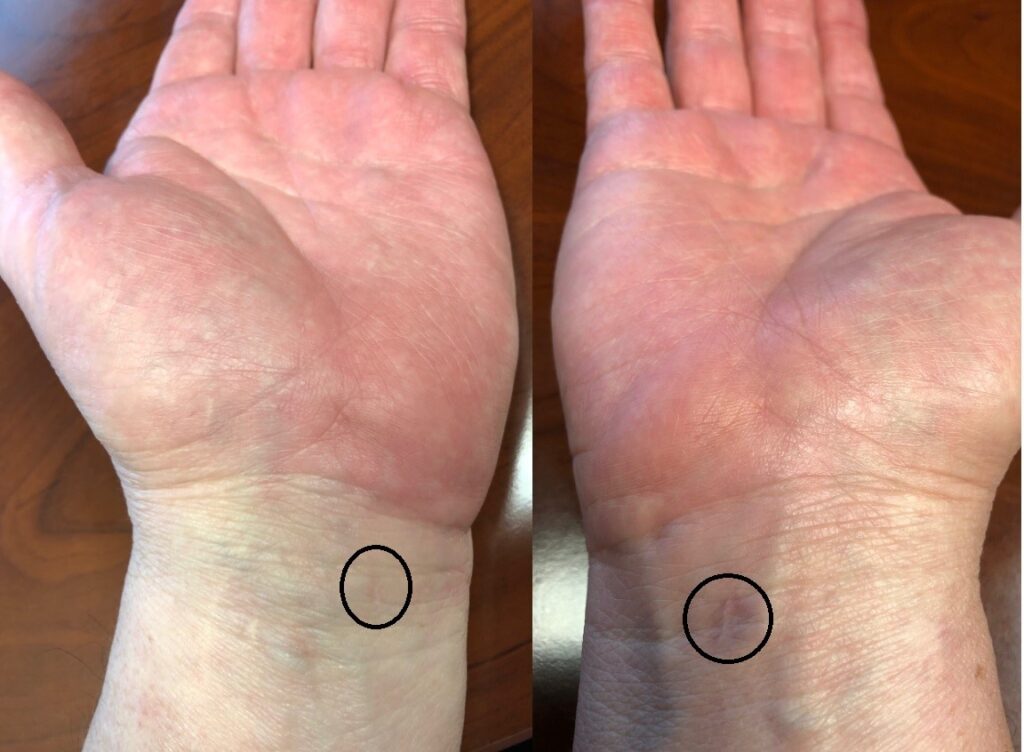Joe, age 70, is fanatical about keeping in shape because he wants to maintain his ability to ski, bicycle, hike, and other activities. That’s why, several years ago when he started feeling pain and numbness in his right hand — symptoms of carpal tunnel syndrome — he refused to see a doctor about it.
“I wanted to avoid surgery because of the long recovery that would keep me from working out; I didn’t want my muscles to atrophy,” says Joe. “I thought I could maybe fix this with my own physical therapy exercises.”
After a while, the symptoms got so bad, though, that they would wake him up in the middle of the night.

“My arm would go completely numb and after that, I’d get a pins and needles feeling and burning like my fingers were on fire.”
Surrendering to Surgery
Eventually, his right hand started to go numb even when doing minor things like buttoning his shirt, holding a cup of coffee, or grasping the steering wheel. “I noticed my quality of life was really suffering and it just wore me out. I knew I needed to get this taken care of,” recalls Joe. He was referred to Dr. Michael Alan Cohn, an orthopedic hand surgeon with the Baptist Health System in South Florida.
At that time, Dr. Cohn was performing endoscopic carpal tunnel release procedures, a surgery that required anesthesia. Joe had heard great things about Dr. Cohn so when the doctor suggested surgery, he decided to proceed with the endoscopic approach.

A while later, Joe’s left hand began to cause him trouble, but he didn’t want to go through surgery again. However, the pain and numbness began affecting his sleep, his driving, and his ability to use the computer, which is important to his job as a consultant. “I had to shake out my hand to wake it back up. I finally realized that even though I wanted to, I couldn’t put off surgery any longer.”
This time, when he reached out to Dr. Cohn, he was pleased to hear about another approach Dr. Cohn had recently adopted: carpal tunnel release with ultrasound guidance using Sonex Health’s UltraGuideCTR™. “When Dr. Cohn finished giving me the details, I was already excited,” says Joe.
“I especially liked that it uses only a local anesthetic instead of going under general anesthesia.”
Like Night and Day
When he compares the two experiences, he says it’s like night and day. With the first surgery, and despite his dislike of taking medication, Joe needed to take Tylenol to ease his discomfort for about a week afterward. He was instructed to keep his hand elevated, which affected his sleep, and the swelling in his palm made working on the computer uncomfortable.
Worse yet for Joe, it took at least six weeks before he could get back to working out at the level he was used to.
On top of that, he had to be careful not to get his hand wet for about a week following the procedure. “That was a pain in the neck for taking showers,” Joe says. He was given a sheet of exercises to assist in his recovery, which he did, and while he got his manual dexterity back, he is still experiencing tingling in three of his fingers. And he has a lump where the incision was.
With the second procedure, carpal tunnel release with ultrasound guidance, it was an entirely different story. First of all, Joe experienced instant relief during the procedure as Dr. Cohn released the transverse carpal ligament.
“They used a local anesthetic on my hand, so I couldn’t feel the process, but suddenly there was a rush of energy to my fingers, and I couldn’t believe it, I could feel my fingers!”
This time around, Joe didn’t have to take any medication for pain. He left the doctor’s office with a small bandage and was told to take it easy for a day or two. Dr. Cohn recommended he could even shower like normal. “When I finally took the bandage off and looked at the scar, it was like a little dot, so much smaller than the one on my right hand and there’s no lump.”
And best of all, Joe says he was working out in his garage within 48 hours of the procedure. “It’s as if I never had carpal tunnel in that hand. I’m not having any pain or tingling. It’s incredible.”

MP04210rA


